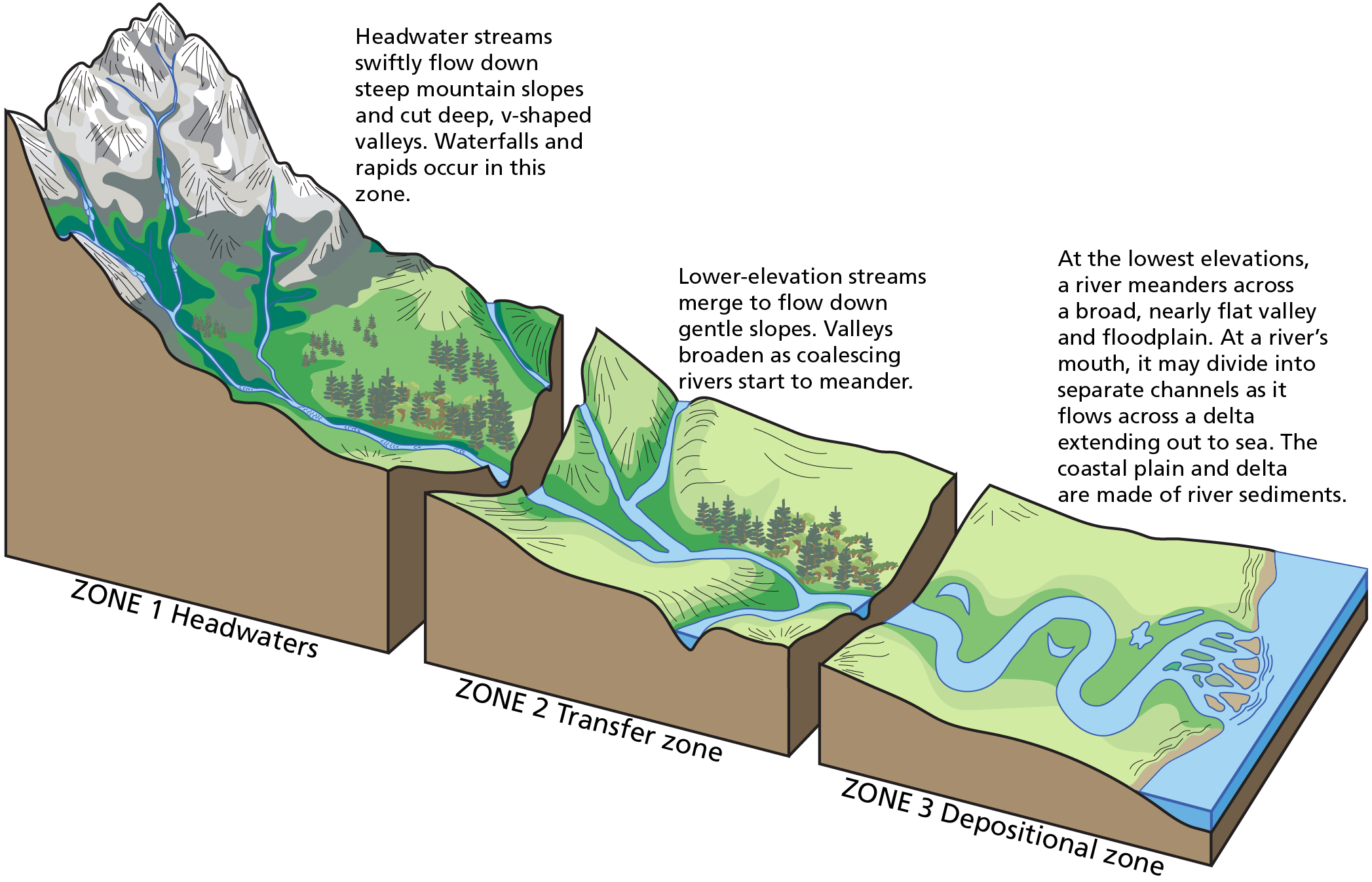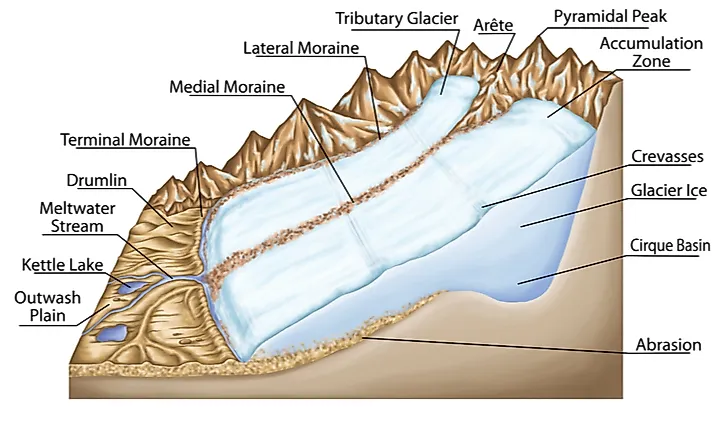Are formed by a combination of erosion transportation. The former of these is recognized as deposition whereas the latter is known as erosion.

Types Of Depositional Landforms
Given elevation starting temperature and LCL calculate the changing temperature of air as it moves over a mountain.

. Is material carried in the middle of the glacier. Learn about and revise glacial landforms and processes including weathering erosion transportation and deposition with GCSE Bitesize Geography AQA. A landscape includes the physical elements of geophysically defined landforms such as ice-capped mountains hills water bodies such as rivers lakes ponds and the sea living elements of land.
Another approach to coastal classification is to consider whether coastal processes in the coastal zone are primarily contributing sediment to the coastline or whether they are removing sediment from the coastline. Upslope orographic - occurs when air mass forced upward. Types of landforms.
The glacial landscapes are formed by the action of glaciers. They form various erosional destructional and depositional constructional landforms. Glaciers are formed by the accumulation and compaction of snow on mountains.
An alluvial plain represents the pattern of floodplain shift over geological time. The main depositional features of the glacial landscapes are. A mass of rock considerably very high occupying a vast area is known as a mountain.
Different scales yield different information. The dominant geomorphic processes are hillslope erosion and deposition slope wash processes and fluvial modification alluvial deposition processes and are very localized in scope. These plains are formed by the deposition of sediments brought down by rivers.
Is the material that has fallen onto the side of a glacier and carried along by it. Terminal Moraine is deposited by the glacier at the snout as it retreats. Glacial till Outwash deposits and plains Moraines Terminal lateral and ground moraineseskerdrumlins Nunatak roche moutonne.
Minor landforms include butte s canyon s valley s and basin s. Ice block breaks off and gets buried by sand then melts leaving a depression or lake behind. Higher altitude and steep slopes are its main characteristics.
Mountain s hill s plateau s and plain s are the four major types of landforms. Pulverized rock gets carried out to the ocean then rain out through the water column and creates clay. The river mouths are often deposited with an excess supply of sediments and form a triangular.
This altitude may reach to several thousand metres from the sea level. The plains formed by the filling up of sediments carried by agents of Erosion like wind rivers glaciers and underground water into depressions are called Depositional plains. Even though we are considering the erosional and depositional activities and their landform creation it should be kept in mind that they are always aided by weathering and mass movements.
An alluvial plain usually includes floodplains as part of its area but extends beyond such plains. Alluvial plains are vast sweeping stretches of plain land that are formed by the deposition of sediments called alluvium. There are three major types of landforms namely.
There are some other independent controls like i stability of sea level. Deposits of sediment are the leading cause behind the formation of beaches. Advection - occurs when warmer air moved across cooler water.
Evaporation - occurs when warmer body of water than cool air above it. These are the glacially formed accumulation of unconsolidated glacial debris. Erosional and Depositional Coasts.
Types of glacier. Lawrence Lowlands DChamplain Lowlands. Deposition leads to the formation of a salt marsh.
A landform is a feature on the Earths surface that is part of the terrain. Look at the location map of coastal landscapes in. Tectonic plate movement under the Earth can create landforms by pushing up mountains and hills.
3The Catskills landscape region is classified as a plateau because it has Amountain Bplateau Clowland Dplain 4New York States Catskills are classified as which type of landscape region. A landscape is the visible features of an area of land its landforms and how they integrate with natural or man-made features often considered in terms of their aesthetic appeal. ATug Hill Plateau BAdirondack Mountains CSt.
Where erosion is the. Cirque and cirque lake Horns and Serrated ridges Arêtes Glacial valleys troughs Hanging valley.

Erosion And Deposition By Glaciers Ck 12 Foundation

Weathering Erosion Deposition 8th Grade Science

Glacial Erosion And Deposition Earth Science

Types Of Depositional Landforms
Depositional Environment Wikipedia

Geography Extreme Landscapes Desert Depositional Features

A List Of Glacial Depositional Features Or Landforms Worldatlas

River Systems And Fluvial Landforms Geology U S National Park Service
0 comments
Post a Comment